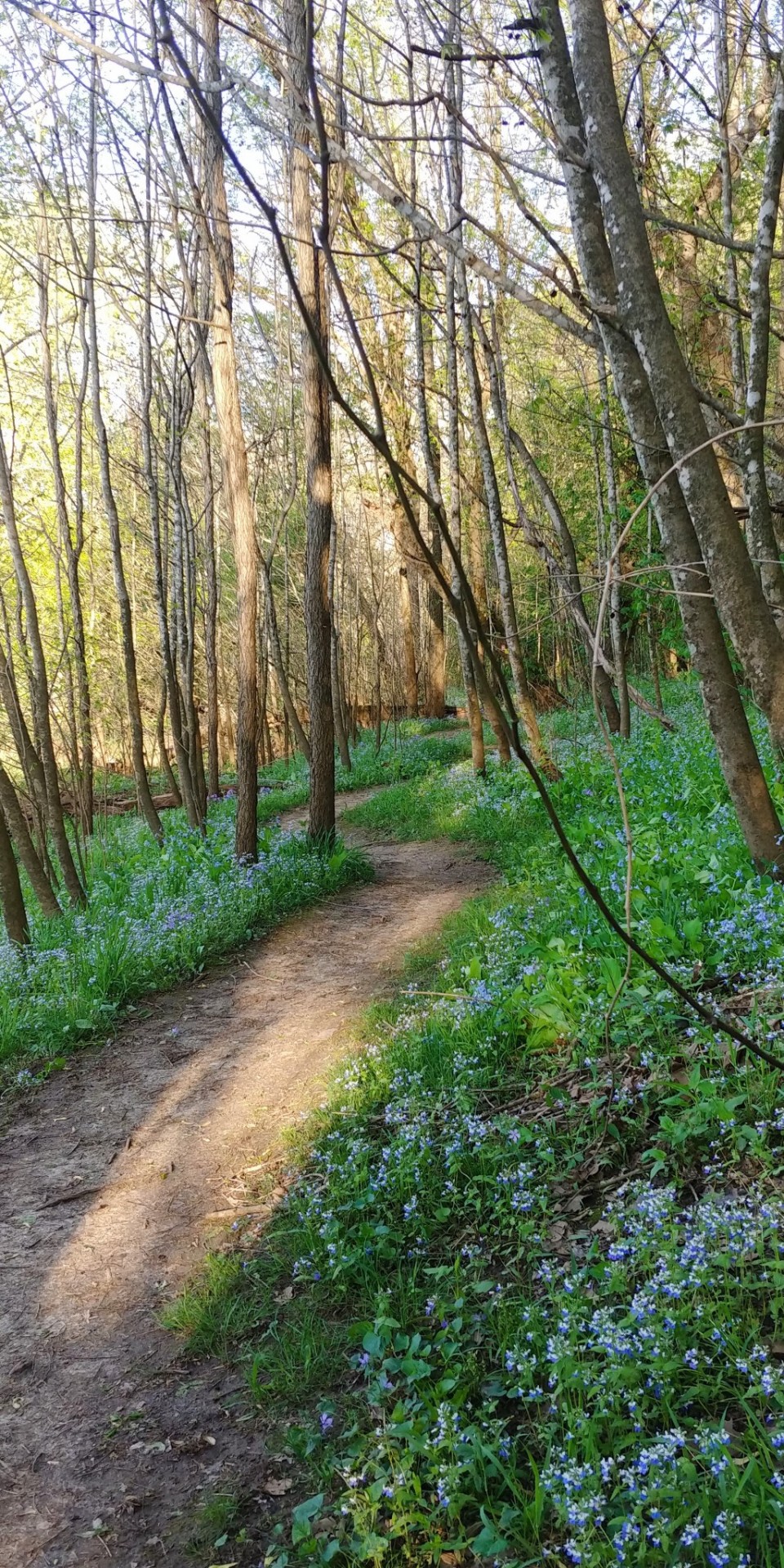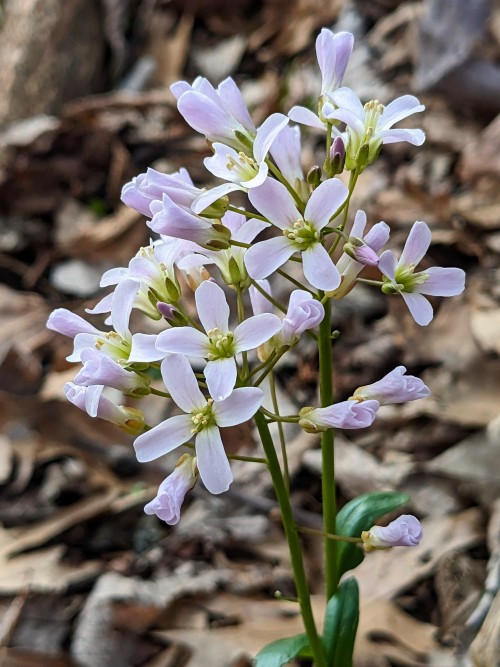
28/Female/Earthling- An amateur naturalist and geology major living in the Missouri Ozarks. Botany 🌿, mycology 🍄, geology 🏔️, foraging 🍓, gardening and more! 🌼🐦🦉🐝 😀 (Natural sciences are my niche.) •iNaturalist ID: oliviarosaline •Rockd Macrostrat Lab: Olivia Myers
86 posts
Wildflowers Flourishing Along A Tranquil Ozarkian Trail. It Was A Blessing To Enjoy This Beautiful Place



Wildflowers flourishing along a tranquil Ozarkian trail. It was a blessing to enjoy this beautiful place where the sun kissed spots of the blue forest floor and only the sound of bird songs and soft wind whispered through the trees. The blue-eyed mary (Collinsia verna) and virginia bluebells (Mertensia virginica) thriving on the forest floor are both native spring ephemerals found throughout the central and eastern parts of North America.
April 17th, 2023
Washington County, Missouri, USA
Olivia R. Myers
@oliviarosaline
-
 ethereal-forest-furry liked this · 11 months ago
ethereal-forest-furry liked this · 11 months ago -
 noelevangilinecarson reblogged this · 1 year ago
noelevangilinecarson reblogged this · 1 year ago -
 noelevangilinecarson liked this · 1 year ago
noelevangilinecarson liked this · 1 year ago -
 konetselektroniki reblogged this · 1 year ago
konetselektroniki reblogged this · 1 year ago -
 apexpoet liked this · 1 year ago
apexpoet liked this · 1 year ago -
 nectarine-neuroticism liked this · 1 year ago
nectarine-neuroticism liked this · 1 year ago -
 witchofthedirt reblogged this · 1 year ago
witchofthedirt reblogged this · 1 year ago -
 enchantedvistas reblogged this · 1 year ago
enchantedvistas reblogged this · 1 year ago -
 svinopotamych liked this · 1 year ago
svinopotamych liked this · 1 year ago -
 rahedlinoodles liked this · 1 year ago
rahedlinoodles liked this · 1 year ago -
 thelostcanyon liked this · 1 year ago
thelostcanyon liked this · 1 year ago -
 sarasakysunmoon liked this · 1 year ago
sarasakysunmoon liked this · 1 year ago -
 vintagevixenbooks liked this · 1 year ago
vintagevixenbooks liked this · 1 year ago -
 jlmahmud liked this · 1 year ago
jlmahmud liked this · 1 year ago -
 vestaignis liked this · 1 year ago
vestaignis liked this · 1 year ago -
 intex-md liked this · 1 year ago
intex-md liked this · 1 year ago -
 deepestanimeartmuffin reblogged this · 1 year ago
deepestanimeartmuffin reblogged this · 1 year ago -
 broken-college-kid liked this · 1 year ago
broken-college-kid liked this · 1 year ago -
 witchofthedirt liked this · 1 year ago
witchofthedirt liked this · 1 year ago -
 iv-stones liked this · 1 year ago
iv-stones liked this · 1 year ago -
 grandkingdomangel liked this · 1 year ago
grandkingdomangel liked this · 1 year ago -
 king-of-roses-world liked this · 1 year ago
king-of-roses-world liked this · 1 year ago -
 rorydbe liked this · 1 year ago
rorydbe liked this · 1 year ago -
 corse2b liked this · 1 year ago
corse2b liked this · 1 year ago -
 seraltphotography liked this · 1 year ago
seraltphotography liked this · 1 year ago -
 narihira8 liked this · 1 year ago
narihira8 liked this · 1 year ago -
 ddb101 liked this · 1 year ago
ddb101 liked this · 1 year ago -
 welufo liked this · 1 year ago
welufo liked this · 1 year ago -
 gerda-p liked this · 1 year ago
gerda-p liked this · 1 year ago -
 truepinkshape liked this · 1 year ago
truepinkshape liked this · 1 year ago -
 lina-vas-dom liked this · 1 year ago
lina-vas-dom liked this · 1 year ago -
 mikelcity liked this · 1 year ago
mikelcity liked this · 1 year ago -
 misterio-m liked this · 1 year ago
misterio-m liked this · 1 year ago -
 dgfmaurizio liked this · 1 year ago
dgfmaurizio liked this · 1 year ago -
 vuonkhuya liked this · 1 year ago
vuonkhuya liked this · 1 year ago -
 m-1-l-a-g-r-o-10-16 liked this · 1 year ago
m-1-l-a-g-r-o-10-16 liked this · 1 year ago -
 danielrexi reblogged this · 1 year ago
danielrexi reblogged this · 1 year ago -
 novemberful liked this · 1 year ago
novemberful liked this · 1 year ago -
 miracles22 liked this · 1 year ago
miracles22 liked this · 1 year ago -
 margocooper liked this · 1 year ago
margocooper liked this · 1 year ago -
 ravensvalley liked this · 1 year ago
ravensvalley liked this · 1 year ago -
 adrar-amellal24 liked this · 1 year ago
adrar-amellal24 liked this · 1 year ago -
 ishikorokoroishi liked this · 1 year ago
ishikorokoroishi liked this · 1 year ago -
 gardenersexyrecycled liked this · 1 year ago
gardenersexyrecycled liked this · 1 year ago -
 mcyombies liked this · 1 year ago
mcyombies liked this · 1 year ago
More Posts from Oliviarosaline



Mica Cap Mushrooms
Coprinellus sect. Micacei
Growing at the base of an old cottonwood tree in the woods.
April 3rd, 2024
St. Louis County, Missouri, USA
Olivia R. Myers
@oliviarosaline

Amanita sect. Vaginatae

Aug. 15th, 2023
St. Louis County, Missouri, USA
Olivia R. Myers
@oliviarosaline


Purple Cress
Cardamine douglassii
Also known as Limestone Cress, this species in the mustard family features clusters of light purple flowers in early spring and can be found in wet and swampy forests with calcium carbonate rich soils. It's native to parts of the eastern United States and southern Ontario, Canada.
The plants I photographed are part of an isolated population remaining in a tiny bottomland forest remnant in St. Charles County, Missouri. Unfortunately, the rest of the forest has been lost due to suburban sprawl and what little of it remains has many invasive species, including winter creeper, callery pear, and japanese honeysuckle trying to encroach from surrounding developments and outcompete native plants like this one.
March 12th & 13th, 2024
St. Charles County, Missouri, USA
Olivia R. Myers
@oliviarosaline


Prairie Trillium
Trillium recurvatum
These unique, dark trillium plants caught our eye while we were exploring woods in Jersey County, Illinois. This species usually has splotchy green leaves. dailybotany suggested these trillium plants may have upped their anthocyanin production in response to exposure to higher levels of solar radiation. There were a few of these trilliums with dark leaves in the general area, and it may have been a sunnier than usual spot in the understory of the forest there, so this theory makes sense. I still wonder if it's possible this small population carries a genetic mutation... I have explored many woods and never seen trilliums this dark. I love listening to different theories and learning new info.
Trillium recurvatum is native to much of the Mississippi River basin in the central / eastern United States. Eastern Ohio has a few populations, which are listed as potentially threatened by their DNR. There are also a couple isolated populations in North Carolina, but it's debated whether or not they were actually planted long ago. Its closest lookalike with overlapping range is trillium sessile; however, the sepals on s. recurvatum plants curve downward as the flower opens, and the stem is usually much shorter than on t. sessile. This species can grow in habitats ranging from floodplains, to mesic forests and mesic savannas. Often, they're found growing in calcareous soils or over calcium-rich rocks such as limestone.
March 20th, 2024
Jersey County, Illinois, USA
Olivia R. Myers
@oliviarosaline

Pale Jewelweed
Impatiens pallida
Native to much of eastern North America, pale jewelweed prefers wet soils in bottomland forests, along streams, etc... Jewelweed is also an old remedy for poison ivy rashes. Hummingbirds love the flowers as well. The pictured plants were growing en masse in a bottomland forest next to the Big River.
Sept. 1st, 2021
Washington County, Missouri, USA
Olivia R. Myers
@oliviarosaline